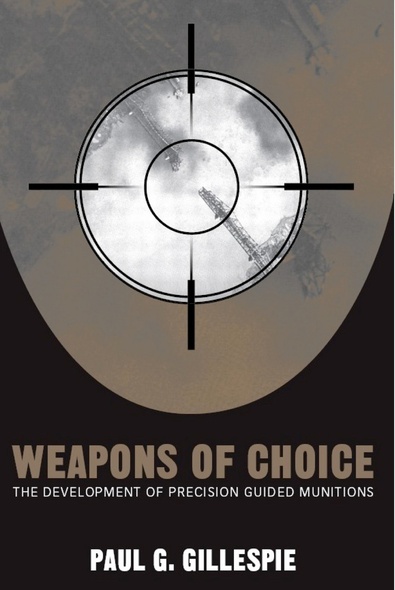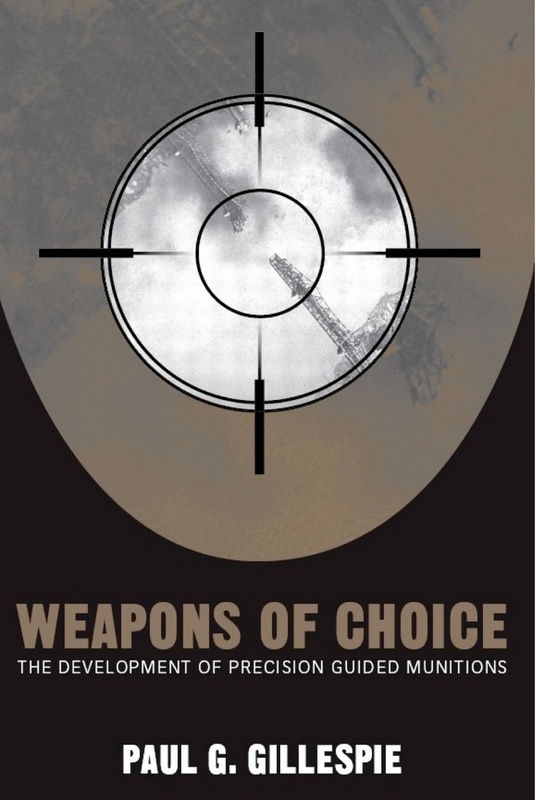Our shopping cart is currently down. To place an order, please contact our distributor, UTP Distribution, directly at utpbooks@utpress.utoronto.ca.
Weapons of Choice
The Development of Precision Guided Munitions
In the United States, efforts to develop precision guided munitions—PGMs—began during the First World War and resulted in an 'aerial torpedo' by the 1920s. While World War II was dominated by large-scale strategic bombing—essentially throwing out tons of free-falling munitions in the hope they hit something important—both sides in the war worked to develop airborne munitions that could be steered toward a target. However after that war, U.S. national security policy focused on the atomic bomb, hardly a weapon that needed to be directed with accuracy.
The cost of emphasis on atomic weapons was revealed in the general unsuitability of American tactics and weapons deployment systems during the Vietnam War. Lessons learned in that conflict, coupled with rapid technological developments in aerodynamics, lasers, and solid-state electronics, brought air power dramatically closer to the "surgical strike" now seen as crucial to modern warfare. New technology created attractive choices and options for American policymakers as well as field commanders, and events in the Arab-Israeli wars, the U.S. raid on Libya, and most dramatically in the first Gulf War created an ever-increasing demand for the precision weapons.
The prospect of pinpoint delivery of weapons right to the enemy's door by speeding aircraft seems to presage war in which the messy and politically risky deployment of ground troops is unnecessary. The potential of such weapons, and their strategic limitations, made the Gulf War and Iraqi War living theater for assessing what such weapons can and cannot do and have important implications for planning for future warfare.
Using technology to reduce the loss of human life has been a cherished dream of the US military since WW I. The development of what became known as ‘precision guided munitions’ is the subject of Gillespie’s exceedingly well-written book. Going beyond work recently done by Kenneth Werrell (Chasing the Silver Bullet, 2003) and David Mets (The Long Search for a Surgical Strike, 2001), Gillespie (USAF Academy) describes in sufficient detail the irregular path these impressive weapons have taken over the past several decades. Highly recommended.’
—CHOICE
‘A significant addition to the field, for there are not many books specifically devoted to PGMs and still fewer that attempt to relate that technology to military and national security strategy.’
—David R. Mets, author of The Long Search for a Surgical Strike: Precision Munitions and the Revolution in Military Affairs





